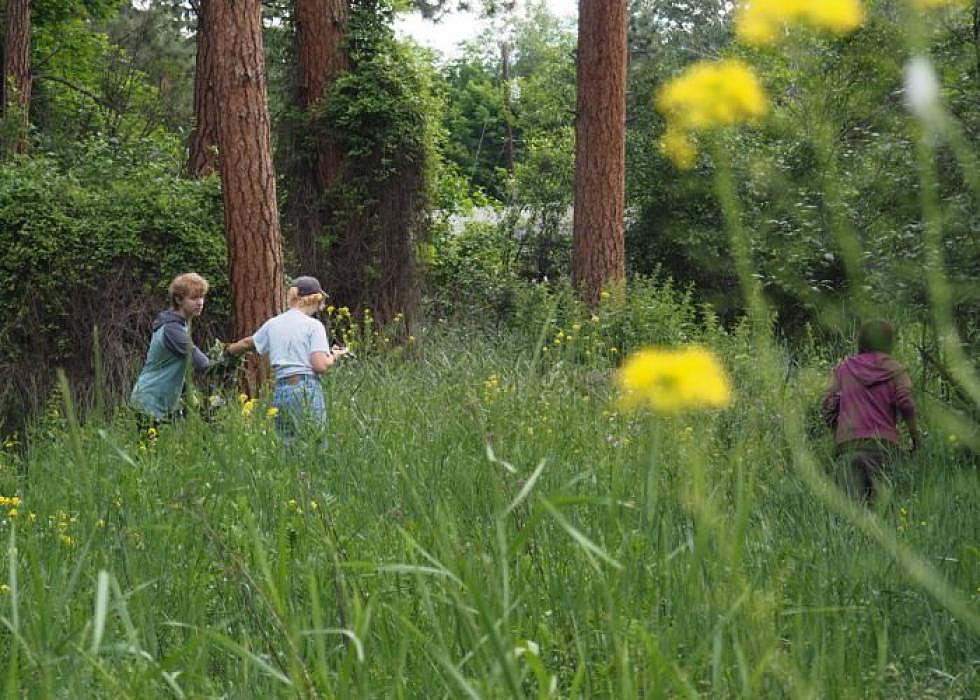
Youth in Restoration: Weed crew hunts for houndstongue in lower Rattlesnake preserve
“I’ve got a little bouquet for you.”
Recent Hellgate High School graduate Jackson Jesness looked up to see a fellow Youth in Restoration team member offering a bundle of houndstongue. Smirking, he grabbed the bundle and tossed it straight into a trash bag.
Jesness and 10 others met at Bugbee Nature Area in the lower Rattlesnake Valley on Tuesday morning to remove invasive houndstongue plants from the seven-acre area.
John Stegmaier, Missoula County’s parks and trails coordinator, organized the event and said such gatherings are essential to managing invasive plants.
“Trying to do something every year does make a difference,” he said.
Stegmaier said the catalyst for Tuesday’s weed pull was being able to work with the Missoula Weed District's Youth in Restoration Program.
Since 2013, local high school students have worked for eight weeks during the summer to learn about conservation through weed management, trail work, fencing, aquatic plant monitoring and bio control.
The weed district collaborates with a number of state and federal partners, including the Bureau of Land Management, The Nature Conservancy and Five Valleys Land Trust.
This is the second year for Youth in Restoration team leader Heidi Daulton, an environmental studies master’s student at the University of Montana. She said the program is important for young people and communities to learn about invasive species management and how they can help.
“We continuously need young people going into the field,” she said. “Land is always going to be there and need to be cared for.”
Members of the local community came out, too. Leslie Guerreri and her son Asher live just down the road from Bugbee. Leslie studied plants at the University of Montana and ran a landscaping business for 13 years, so she knows exactly what to look for when she comes to Bugbee.
“We come down here all the time,” she said. “We always try to pull as much houndstongue as we can.”
Houndstongue can be a particularly obnoxious invasive, Stegmaier said. The seeds, which grow during the plant’s second year, are sticky like Velcro and easily cling to dog fur and deer hides.
Before the plant goes to seed, weeding crews can simply cut and leave the stalks on the ground. Now that the plants have gone to seed, however, the crew members at Bugbee had to carefully collect and bag each stalk they cut.
Jed Little, the Missoula Weed District’s GIS data coordinator, said houndstongue is especially bad in the Rattlesnake area and covers a significant portion of the Bugbee Nature Area. Efforts like Tuesday’s cleanup, however, can help.
“The plant only lives for two years, so you really can impact it by hand-pulling,” Little said. He added that because animals won’t eat houndstongue, it can outcompete other plants that might be more palatable to wildlife.
It’s also on the state noxious weed list, so organizations are required to take steps to control and prevent it from going to seed.
Stegmaier said Missoula County Parks, Trails & Open Lands hopes to formalize more volunteer opportunities like Tuesday’s and increase the number of cleanup events held annually.
Katy Spence is an environmental journalism graduate student at the University of Montana, and is working this summer for Missoula Current.
